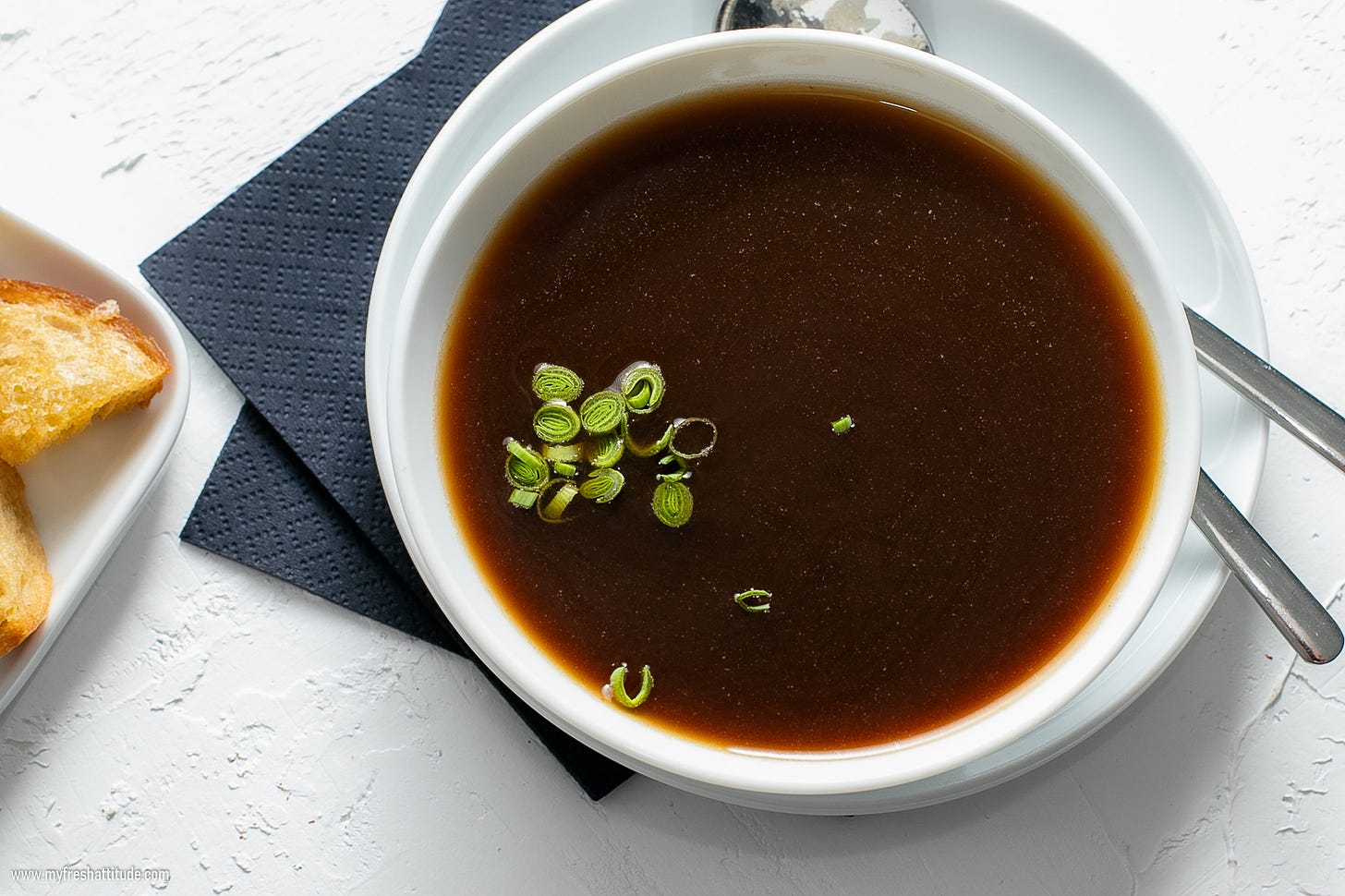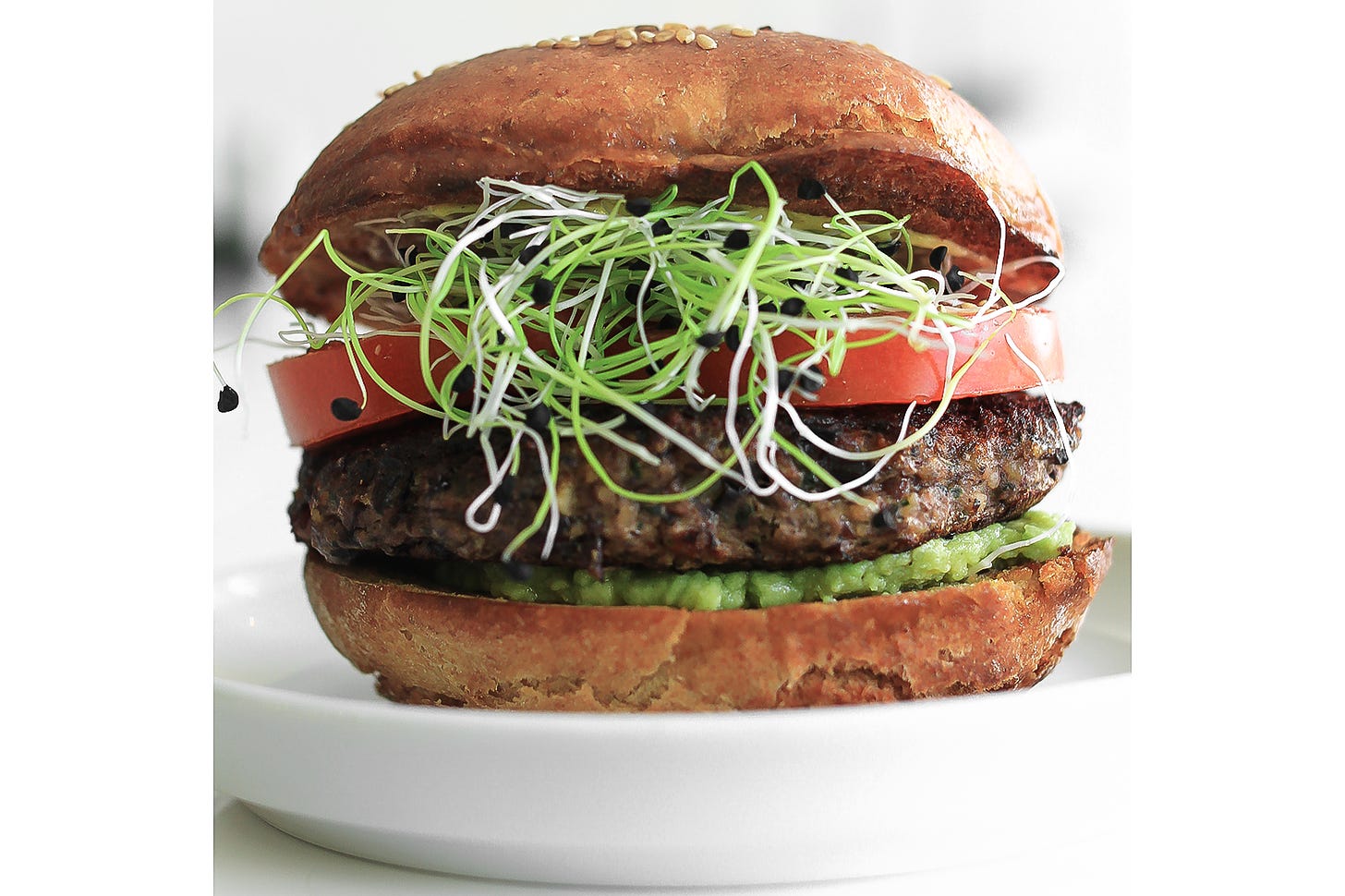It’s all about developing umami
Umami is a taste sensation that makes foods savory, complex, satisfying and mouthwatering…it’s the key to great cooking!
I’m coming around to the idea that cooking delicious food is all about developing umami – get the balance of umami, acids, sweetness, saltiness and a touch of bitterness right, and everyone will rave about your food. And as it turns out, it doesn’t matter if the food is plant-based or animal-centric.
I was initially one of those stubborn chefs clinging to the belief we only have four different taste receptors: sweet, salt, acid and bitter. I brushed off early claims from industry experts that umami should be considered a taste. To me, the concept of umami was more of a combination of senses and not an isolated taste. I simply couldn’t jump on the bandwagon because of the lack of scientific evidence claiming humans could taste savory. Hell, at that time, no one could even define what savory meant other than some mysterious notion of an undefined sensation that made foods taste irresistible.
Finally, after years of debate and back-and-forth discussions among food scientists, chefs and increasingly opinionated internet influencers, umami was scientifically proven. Neuroscientists from the University of Miami successfully located taste-bud receptors for umami in 2006. That’s when I slowly began to come around to the idea of umami, and I realized accepting umami as a different taste experience matters a great deal when it comes to cooking – especially plant-based cooking.
What is Umami?
The four taste elements most often discussed are simple to understand. Most of us recognize the taste of sweet…or salty. It is simple to identify with the puckering sensation caused by acidic foods or that sense of medicinal dryness that arises after chewing something bitter. But what exactly is umami? The consensus can best be described as an intensely savory or meaty sensation that lifts – or enhances – other tastes and flavors. It’s that savory sensation found in dried and re-constituted mushrooms, or that taste found exclusively in soy sauce…or rich dark miso.
Or put another way…umami is that ingredient used to balance a dish that seems to lack something.
The umami experience comes from glutamate, an amino acid that produces the umami taste when it is not bound by other amino acids. This often occurs when glutamate-rich foods are cooked in a certain way (fermentation, drying, aging and high-heat cooking), but it can also develop through natural ripening (a ripe tomato has much more glutamate than an unripe tomato).
Umami is subtle – it loves to play the role of a supporting actor in a cast of flavors. Think about an unctuous teriyaki sauce made with a bit of vinegar, a touch of soy sauce, a hint of heat and some sweetener – in theory, all four tastes are balanced in this sauce. Make the same sauce and replace the soy sauce with just a bit of salt; you should notice it’s nowhere near the same thing without the soy sauce. This is umami…and how it works.
Most people are already familiar with this sensation – especially anyone with experience eating meat or aged cheese. These are umami-rich foods, and the sensation is enhanced by cooking, or in the case of cheese, by aging. Plant-based foods are less obvious, although many plants are rich in umami. A properly prepared tomato sauce is delicious on pizza or tossed into spaghetti – it’s also full of umami. When the tomato sauce wasn’t reduced or lacked seasoning, it tasted flat… may be watery or overly acidic. Something is missing…and that something is umami.
Plant-based cooking relies much more on proper seasoning and cooking techniques to bring out naturally occurring umami tastes. By adding umami-enhancer ingredients, plant-based recipes develop into exceptionally tasty foods – foods that do not need to be classified as vegan because they are simply delicious.
Over the course of the next few weeks, I will further explore how to develop umami in vegan foods. I will look at common umami-enhancer ingredients I use in the kitchen, go into cooking techniques that expand and enhance umami and discuss the role texture plays in the umami experience we crave. I hope you follow me on this fascinating journey…and begin to develop your unique style and explore ways that may help you cook some incredibly satisfying meals.
As always, I would love to get your feedback. Please feel free to comment below, or if you’d like, send me a private email with your comments or questions.
Black Bean and Mushroom Burgers
One problem with vegetable burgers is the consistency and texture. I usually find them very soft. Even if they taste impressive, the soft texture thing really bothers me and makes for a less-than-satisfying burger experience – especially if they fall apart when you bite into them.
These burgers look a lot like ‘meaty’ burgers, and the texture is definitely firm.




